This is Part 2 of a Trilogy +1. Click here to read Part 1.
We had already planned to go to the cranberry bogs on the south Washington coast the day after the Election. We thought about staying in bed for the rest of the year. The fog that morning lay thick and heavy in every direction. We went anyway. Stopping at the Espresso hut in the village just north, Debbie ordered hot chocolate. The woman at the window asked how she was doing. Debbie simply answered: “Well…I’m a Democrat.” Sympathizing, the woman described, to her own amazement, how one of the local white guys, a regular customer, had stopped by to order his usual on election day. Probably in his 70’s, he’d never voted in his life. But he voted this time. Probably voted only for President. The box he checked was predictable.
With hot chocolate and a scone, we headed up the highway through Elsie, Jewel and Mist, pondering the suburban/rural divide, seeking fresh cranberries. We were hoping to buy directly from the ones who steward the bogs. We crossed the great Astoria bridge into Washington, grabbed some lunch at a diner in Raymond and skirted the marshes and oyster beds of Willapa Bay on our way to Grayland in the heart of cranberry world. We’ve been there before. We knew we were late for the harvest, but were hoping to find someone on the bogs in their cranberry-colored packing shed, still processing berries.
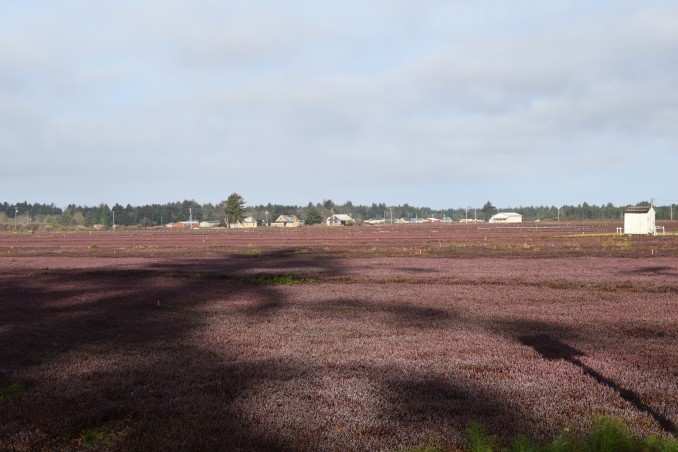
We arrived in Grayland and started asking around. The people at the Grange Hall said we should try the local store. The name of the store is actually “Local Store.” We found a bin of berries there. Local farmers donate them. The proceeds support local schools. That was cool, but they weren’t exactly fresh and we really wanted to find a farmer. The curator of the Cranberry Museum down the road gave us the 25 cent tour on the history of all things cranberry. Looking at an aerial map of the whole region, we could see all the bogs in that locality. In an afterthought, she pointed out how a mile or so of the coastline had eroded back toward the bogs in very recent years as the ocean changes with the climate. How long before the saltwater poisons the bogs? She said we should try the fish and oyster shop at the end of the peninsula so we made our way along that receding coastline to the shop. A woman behind the counter said her cousins might be the last growers harvesting. She had no luck texting them, so we headed out in the direction of their place.
When we dare go to the hinterlands, we always learn things we never knew. Unless, I suppose, we’re just accidental tourists. For instance, most of us don’t know cranberries can be harvested dry. Almost all the Grayland bogs are done that way, not flooded and floated like the Ocean Spray commercial on the flat screen. From the 1880’s, pickers picked on their knees with all kinds of fingered contraptions.
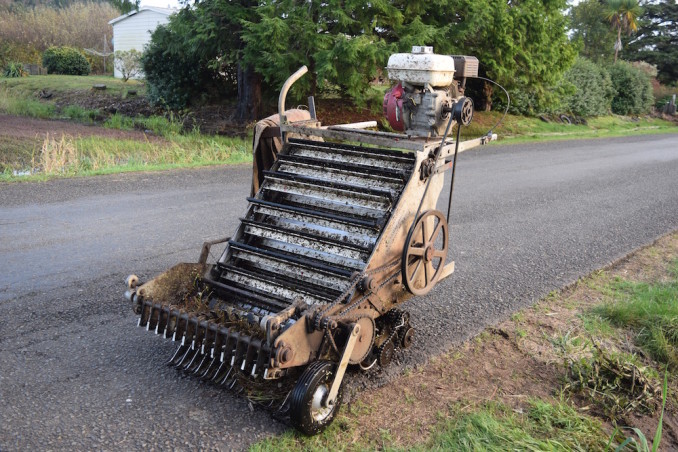
In the late 50’s, Julius Furford invented a walk-behind picker. It lifts and prunes the vines while picking the berries into burlap bags for transport to the packing sheds for processing. No one has come up with a better design than the Furford. You can wet pick, but those berries spoil faster and go for juice and sauce. Growers get 4X the price for dry pick.
We drove the roads in the bog communities immersed in beauty. Homes and bogs all cranberry-hued and sheds are full of bright colored abundance. The growers tend relatively small acreages: some may own 7 or 8 acres and lease a few more, some may keep 25-30. The packing sheds are small, garage-like buildings. Many shingle-sided homes and processing barns stand vacant, sinking into the peat, but new homes and facilities are built to the same scale. In suburban world, if you’re making profits, you build bigger homes and operating spaces. No one here seems to have surplus wealth. Many must work beyond the bog to survive. From the numbers of operations, the cranberry economy looks pretty good on the surface anyway. But these are the kinds of things we’re going need to learn about our friends beyond town.
The signs on packing sheds read “Johnson Brothers, Ocean Spray Grower #235, Vanderkopf Family Farms, Ocean Spray Grower #2.” Ocean Spray began in 1930 as a grower-owned cooperative of 3 farmers. With 700 growers today, OS is still a grower-owned cooperative, at least on paper. But in the past 20 years, there have been frequent anti-trust allegations and settlements as Ocean Spray absorbed numerous independent processors to become the only game in town. There are class-action suits by lower-tier OS growers and independents, alleging OS has fixed pricing artificially low to drive independents out of business or force them to become members. Anyway…all this stuff are realties we mostly ignore in the supermarket while they are the very things that keep the destiny of our outland neighbors hanging in the balance. One of the political curiosities in the aftermath of the election, is the anger and distrust of the very government that should exist to stand with grower families and millions of others like them against the price fixing monopolists.
We did find the cousin of the woman at the oyster joint, chasing his Furford dry picker through the final bog of the season. The field was strewn with the burlap bags the picker drops as they’re filled. As he pushed the Furford up onto the road, I introduced myself and asked him how it was going. He said he was now done. The crop was pretty fair this year. I asked him if there was any chance we could buy from him. He pointed down the road to the shed where the rest of his family was busy separating vines from berries and sorting them into bins for transport to Ocean Spray. He and his wife have 9 young children. I’m sure, in the very few minutes we were there, each of them introduced themselves to us at least once. We bought 40 pounds for 50 cents a pound.
Much has been said in the aftermath about the need for us to finally understand the other side. One of the problems with this message is who’s articulating it. For the most part the mainstream pundits on all sides are closeted suburbanites who don’t know the dry picked cranberry from the wet and will negotiate the lowest possible price for their Thanksgiving sauce at Costco or Kroger and think they’ve made a really good deal. They think paying the lowest price for something is a good thing. What a country!
What I think they don’t get is that a lot of us, in the past 10 years, have been connecting with the other side, because we’re learning we have common ground. Suburbanites from Ashland, Eugene, Salem, Portland, Vancouver, Tacoma and Seattle who oppose the expansion of fossil fuel infrastructure because we need to Keep It In the Ground, are standing with farmers, ranchers and rural business people whose lands are being condemned and clean water supplies threatened by such as the Jordan Cove Pacific Connector liquified natural gas (LNG) pipeline project in Coos county on the S Oregon coast. We are standing with the people of Hoquim, Washington, near cranberry land, to oppose a LNG terminal there and the Lummi and other tribal peoples on up the coast near Anacortes and Cherry Point whose indigenous treaty rights are once again being violated by polluting refineries and efforts to build new off-loading terminals for exporting Bakken coal and Tar Sands oil to Asia. Yeah we need to get out more, for sure. And we are. And more and more of us will be stepping out. I don’t think this is what the commentators mean when they carry on about us needing to know each other better across our chasmous divides. Because they’re not out here to witness how we are making a more perfect union.
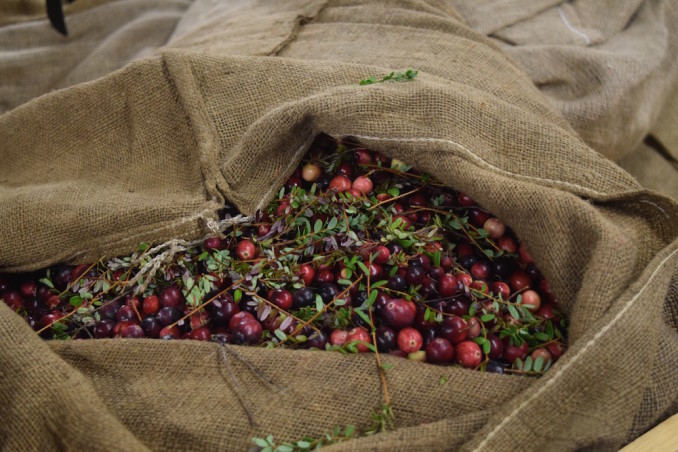
If this makes any sense at all to you at Thanksgiving 2016, chalk it up to the fact of cranberries. We dried cranberries and cooked cranberries into sauce recipes and I baked an apple-cranberry pie. Around our tables this Thursday and beyond, the bitter-sweet faire will help us remember who we are.
Stay tuned for Part 3!

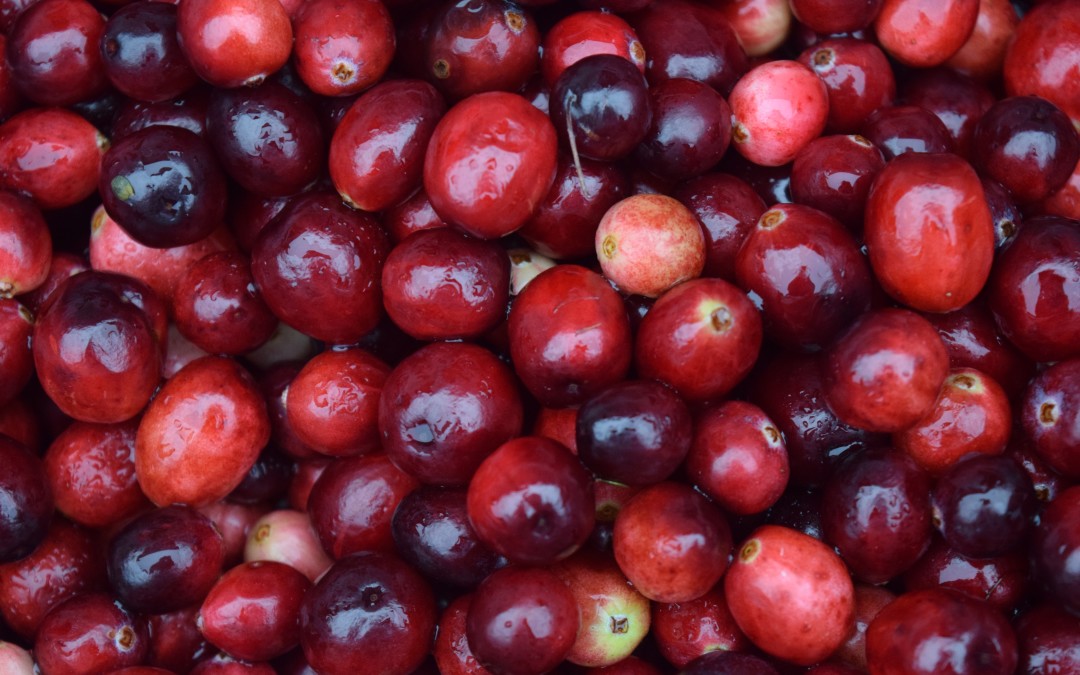
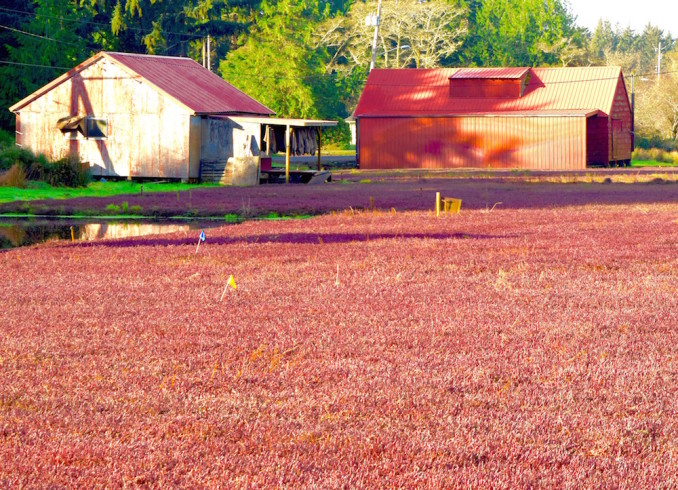
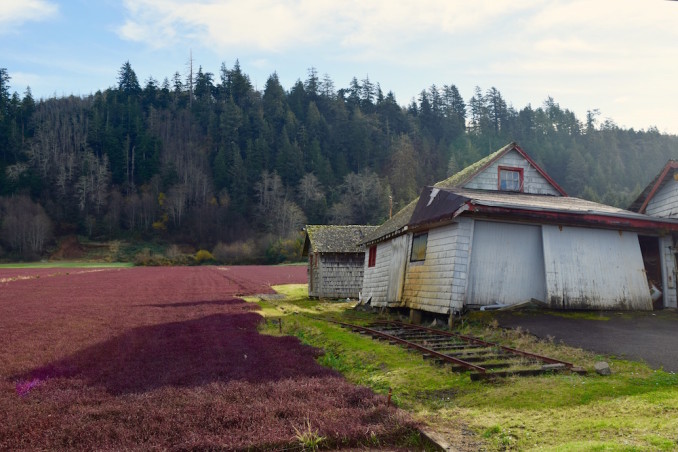
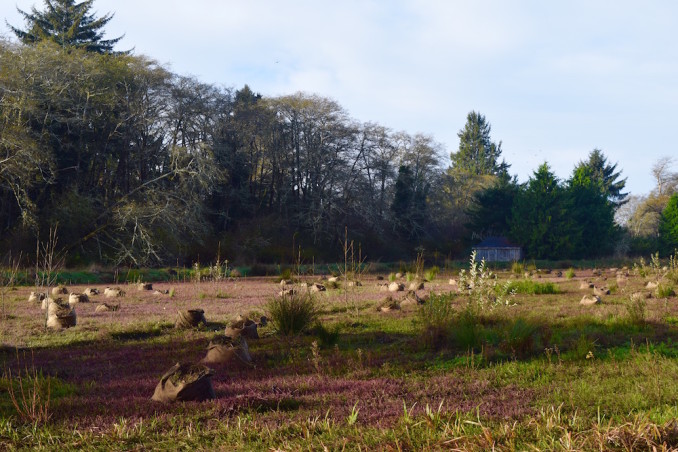
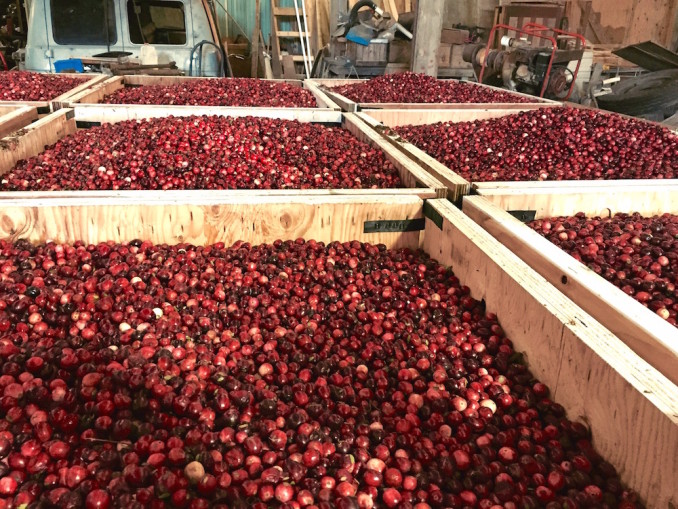
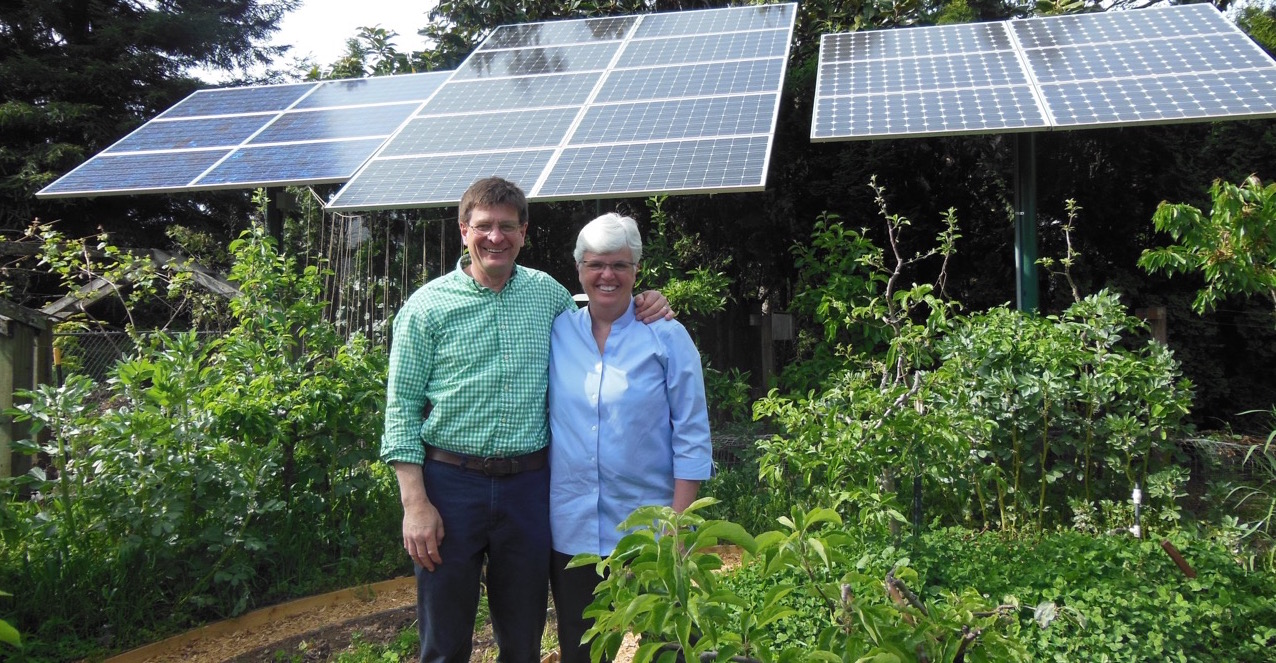


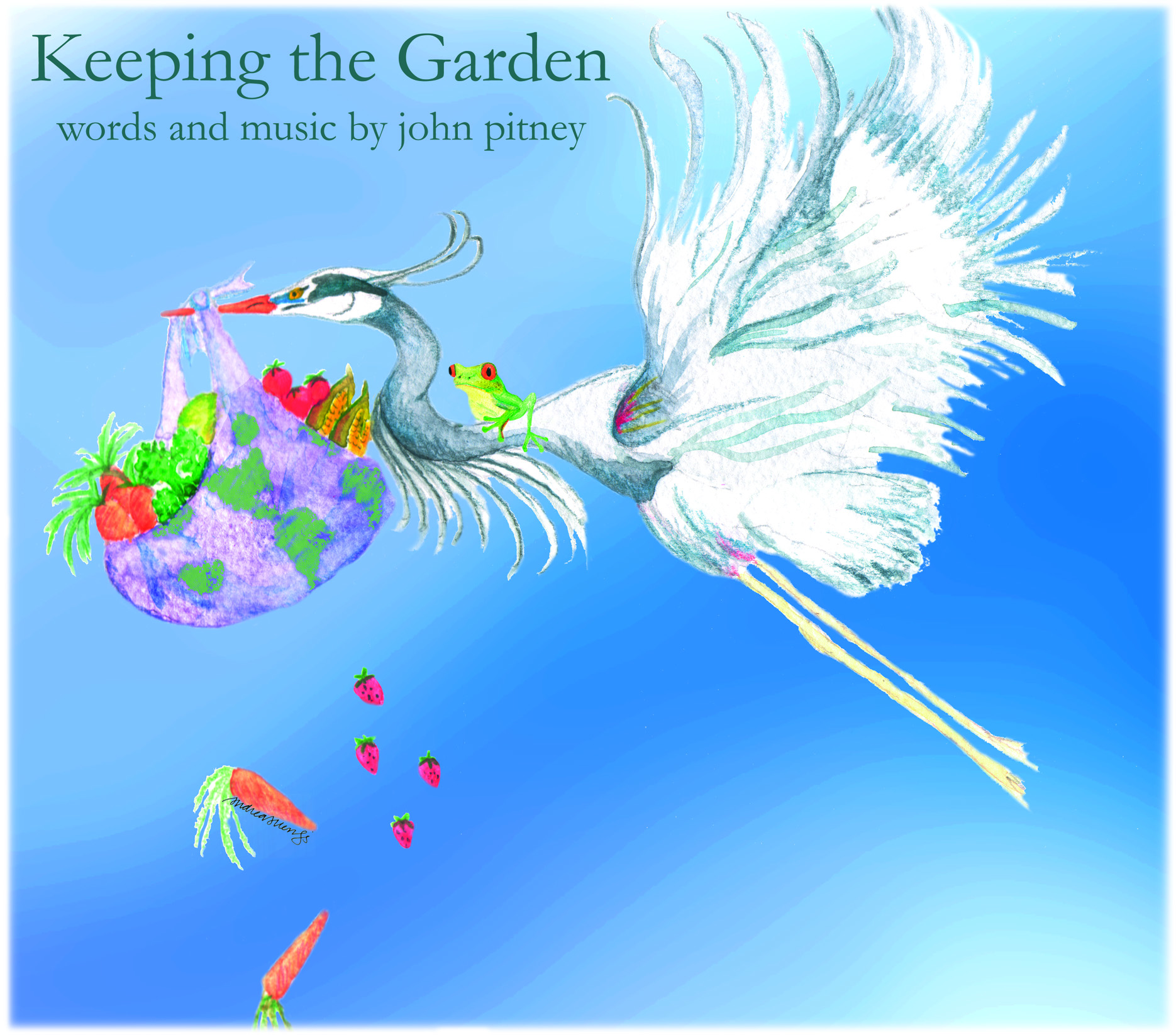
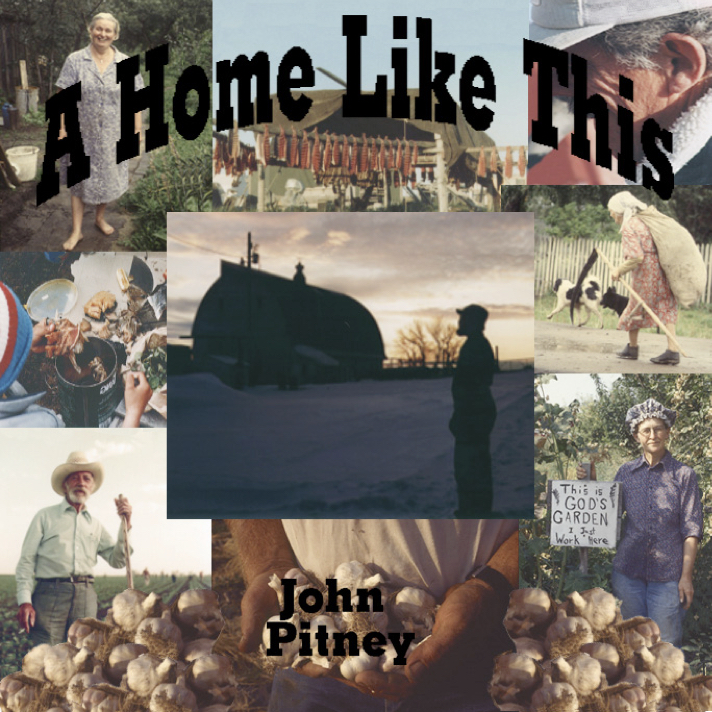
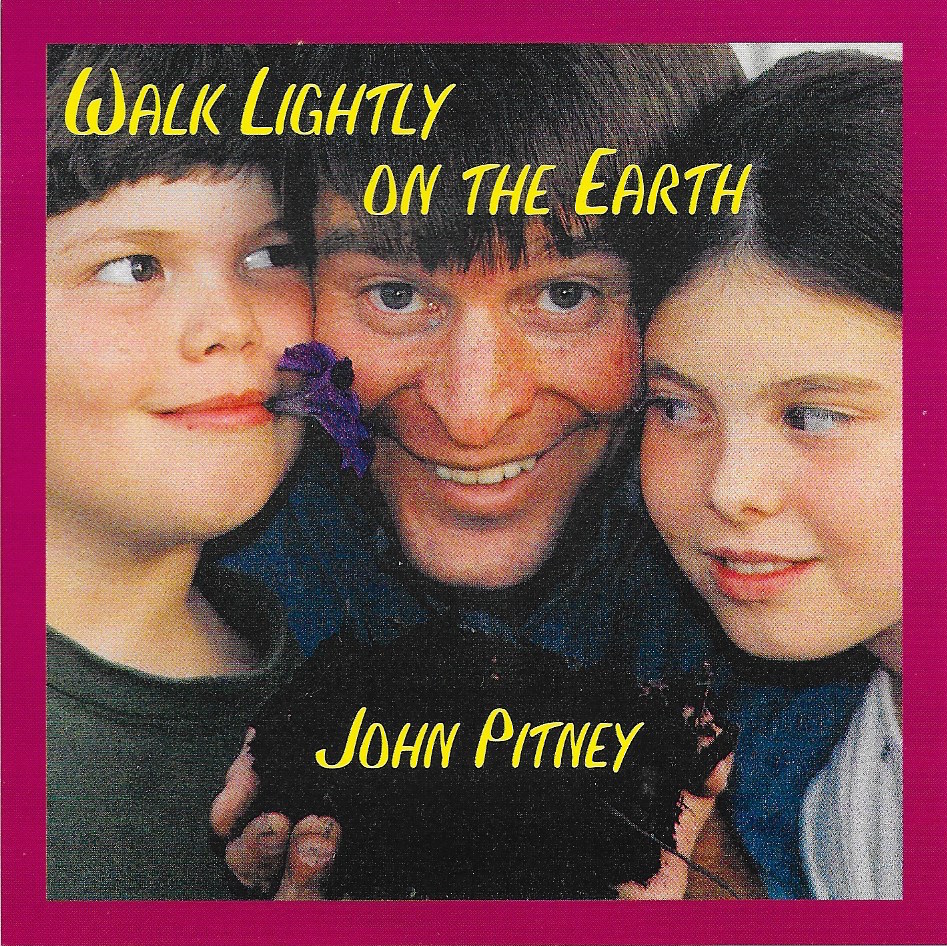

JOhn and Debbie
As we celebrate what we are thankful for, you two are at the top of our list. Thanks so much for your commitment to making a better, more sustainable, and communal world.
We love you
Penny and Jan
This is late and behindhand, but you know we are always on your side. It is the right side to be on. The Earth side.
Barb and Jim